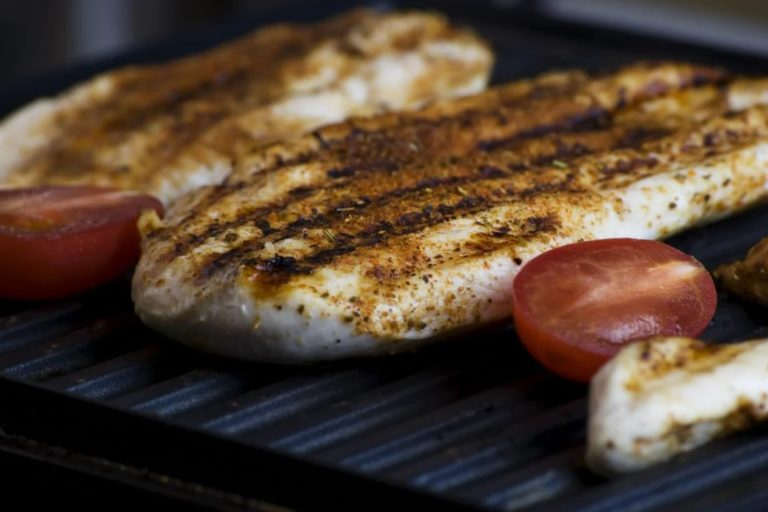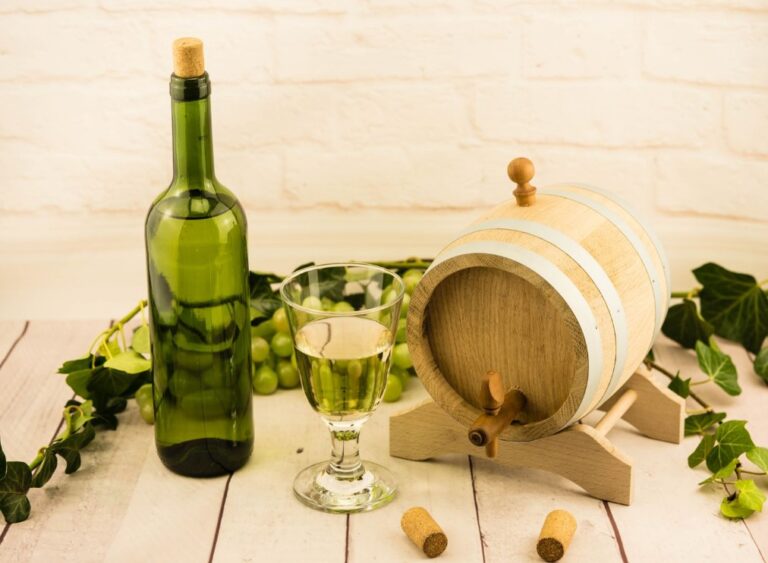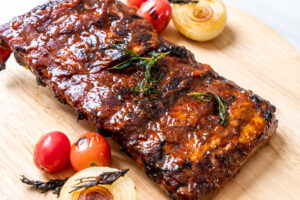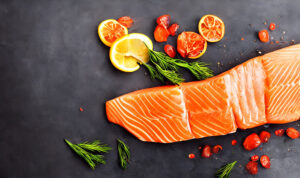
Order your next bottle of Scout & Cellar wine TODAY!
Do you ever find yourself perplexed when it comes to choosing between prosecco wines and vintage champagne? After all, they look similar in appearance, yet they differ greatly in taste.
From the subtle nuances of their flavor profiles to the production methods used to make them, understanding what sets each beverage apart is key if you want to ensure that your next glass of bubbly is exactly as you’d hoped for!
In this blog post, we’ll be taking a deep dive into the world of sparkling wines and exploring the differences between champagnes and prosecco grapes – from ingredients used down to sparkling wine styles and price ranges.
Whether you’re looking for a celebratory tipple or simply interested in expanding your knowledge on bubbly drinks called champagne, join us as we provide an inside scoop into everything related to these two delicious Italian and French libations!
What Is Prosecco Wine And Where Does It Come From
Prosecco is a white sparkling wine that has become one of the most popular drinks in the world. It’s light, refreshing, and pairs well with many different meals. But what is prosecco, where does it come from, and why has it become so popular? Let’s take a look at its history and find out!
What Is Prosecco?
Prosecco is an Italian sparkling fine wine made from the Glera grape variety. The grapes are grown in the Veneto region of Italy, which lies just north of Venice. The wine is fermented slowly at low temperatures to preserve its delicate flavors. The result is a light, sweet-tasting sparkling wine that can range in flavor from floral to fruity green apple.
The History Of Prosecco
Prosecco has been produced in the Veneto region since Roman times. In fact, the name “prosecco” comes from a small village near Venice called Prosezzo, where this type of wine was first produced in the 16th century.
Over time, production methods have changed; most notably, producers began adding secondary fermentation to make the wines bubbly and more flavorful. This method became known as “spumante,” which means “foaming” or “frothy” in Italian.
Modern Prosecco
Today’s modern proseccos use this traditional method but also add other ingredients like sugar or fruit juice for extra sweetness and complexity. This makes them perfect for pairing with lighter dishes like salads or seafood dishes. They are also popularly served as an aperitif before dinner or as an accompaniment to dessert.
In recent years, prosecco has seen a surge in popularity around the world due to its light flavor profile and versatility when it comes to food pairings. It’s no wonder that it has become such a favorite among drinkers everywhere!
Not only does prosecco taste great on its own, but its versatility makes it perfect for pairing with all kinds of foods—from salads and seafood dishes to desserts and more! Whether you’re looking for an aperitif before dinner or something special to accompany your meal, prosecco is sure to bring joy to any occasion!
What Is Champagne And Where Does It Come From
Have you ever asked yourself what is champagne? The answer is that it’s a sparkling wine made in the Champagne region of France. It has a unique flavor and texture that sets it apart from other types of sparkling wines, but just how did it become so popular? Let’s explore the history of champagne and find out.
The Origin Story Of Champagne
The story of champagne begins with a French monk named Dom Pérignon. In 1668, he discovered a method for making sparkling wine by taking advantage of the carbonation created by trapping carbon dioxide in his bottles.
This discovery was revolutionary and quickly gained popularity among the French nobility. The method was improved upon over time, eventually leading to today’s modern style of champagne production.
Where Does It Come From?
Champagne comes from the Champagne region in France, located just northeast of Paris. This area is known for its cool climate and chalky soil, which makes it ideal for growing grapes that are used to make champagne.
Grapes grown here are generally Pinot Noir, Chardonnay, and Pinot Meunier. These three grapes work together to create the unique flavor profile associated with champagne.
What Makes Champagne Special?
Champagne is known around the world as a luxurious beverage that is often used to celebrate special occasions such as weddings or birthdays. Its unique flavor profile comes from its production process, which involves aging the wine on its lees (dead yeast cells) before bottling it with added sugar and yeast for secondary fermentation. This process creates bubbles that give champagne its distinct bubbly texture and taste.
The Difference Between Prosecco And Champagne
For many wine connoisseurs, there is nothing quite like a glass of sparkling wine to add a special touch of elegance to any occasion. When it comes to sparkling wines, two names are often used interchangeably—Prosecco and Champagne. But what exactly is the difference between Prosecco and Champagne? Let’s take a look.
The Grapes Used In Production
One of the major differences between Prosecco and Champagne is the type of grapes they are made from. While both wines are made using the traditional method of fermentation, Champagne is made with Pinot Noir, Chardonnay, and Pinot Meunier grapes.
Prosecco is made with Glera grapes. Additionally, Champagne can only be produced in certain regions in France, while Prosecco can be produced in other areas such as Italy and Slovenia.
The Taste & Color Differences
When it comes to taste and color differences, you will notice a drastic difference between these two sparkling wines. The primary difference is that Prosecco tends to have a much sweeter taste than Champagne due to its lower level of acidity.
In terms of color, Champagne has more golden hues whereas Prosecco has more peach hues because it contains higher levels of anthocyanins (the pigment found in red grapes).
The Cost Difference
Another significant difference between these two types of bubbly beverages lies in their prices—Champagne tends to be much more expensive than Prosecco due to its labor-intensive production process and limited availability in certain regions (which drives up demand).
On average, you can expect to pay anywhere from $20-50 per bottle for a good quality bottle of Prosecco while good quality bottles of champagne tend to range anywhere from $50-100 or more per bottle.
How To Store Prosecco And Champagne
Gifting a bottle of bubbly is a momentous occasion, but no one wants to uncork a bottle that has gone flat or tasted stale. So how do you store sparkling wines like champagne and prosecco? Proper storage can preserve the fizz and flavor of your favorite bubbly for months, if not years. Read on to learn how to store prosecco and champagne to ensure your champagne ages correctly.
Temperature Matters
The best temperature for storing wine is between 45-65 degrees Fahrenheit, with the former being ideal for sparkling wines. Unfortunately, most homes don’t have temperature-controlled wine cellars. The good news is that a chilly basement or closet would work too. Make sure the area you choose isn’t overly humid either, as this can ruin your label over time.
Light Is Unfriendly
Prosecco and champagne should only be stored in cool, dark places to keep their champagne bubbles intact and reduce oxidation. Sunlight and fluorescent lighting are particularly damaging to any kind of wine so make sure the chosen area is well shielded from light exposure.
This goes for both the upright and horizontal positions; UV rays will penetrate through paper labels if left exposed long enough!
Store Upright vs Horizontally?
The debate about storing bottles horizontally versus upright continues to rage on in the world of winemakers. Some believe that keeping bottles upright reduces cork dryness while others argue that storing them horizontally prevents cork deterioration over time.
In reality, it’s likely more important just to keep them away from sunlight than worry about which way they are facing. Regardless of what position you choose, make sure your sparkling wines are stored securely away from any potential hazards or vibrations (like washing machines) which could affect its flavor or bubble levels over time.
Storing sparkling wines like prosecco and champagne correctly is essential if you want them to last longer than a few weeks! Keep your bottles at a cool temperature (45-65°F), store in dark places away from light exposure, and make sure they are secure – whether you decide to store them vertically or horizontally! With these tips in mind, you can be sure that every bottle of bubbly will remain fizzy for months (or even years!) down the line!
Read more about the right temperature to store red wine in this article.
A Guide To Buying Prosecco And Champagne
If you’re looking to buy some bubbly for a special occasion or just want to add a bit of sparkle to your every day, it’s important to understand the difference between prosecco and champagne. Both are delicious, but they differ in terms of flavor, price, and production methods. Let’s explore what makes these two sparkling wines unique so that you can make the best decision when purchasing your bottle.
Flavor Considerations When Choosing A Sparkling Wine
When choosing between prosecco and champagne, it’s important to consider your personal taste preferences as well as the type of food or occasion that you plan on pairing them with.
For example, if you’re looking for something light and refreshing that won’t overpower delicate dishes like fish or salads then prosecco would be an ideal choice due to its sweet green apple flavor profile.
On the other hand, if you’re looking for something that will pair nicely with heavier foods like steak or aged cheeses then champagne is likely your better bet due to its dryer taste profile.
Additionally, if you’re attending a formal event then champagne may be preferred over prosecco given its higher price point and longer aging period which gives it an air of sophistication that can be hard to beat!
When deciding between buying prosecco or champagne for any occasion, there are many factors to consider such as flavor preference and budget constraints.
Ultimately though it comes down to understanding how each type of sparkling wine is made as well as what type of food or event you intend on pairing them with. By understanding these differences you can make an informed decision when choosing your bubbly beverage which will help ensure that everyone enjoys their experience!
Final Thoughts About The Differences Between Champagne And Prosecco
Prosecco and champagne are both delicious sparkling wines, but they differ in terms of production methods, flavor profile, and price. Understanding the differences between these two wines is essential if you want to make the best decision when purchasing your next bottle.
Whether you’re looking for something light and refreshing or something that will pair nicely with heavier foods, prosecco and champagne have got you covered!
Frequently Asked Questions
Q: How To Serve Prosecco?
A: Prosecco is the perfect way to celebrate any special occasion or just add a little bit of sparkle to your day. When serving prosecco, be sure to chill it well ahead of time.
You’ll want it served chilled and bubbly- as prosecco loses its fizz quickly when left at room temperature. It’s recommended that prosecco is served in a tall flute glass so you can appreciate the aroma and color.







